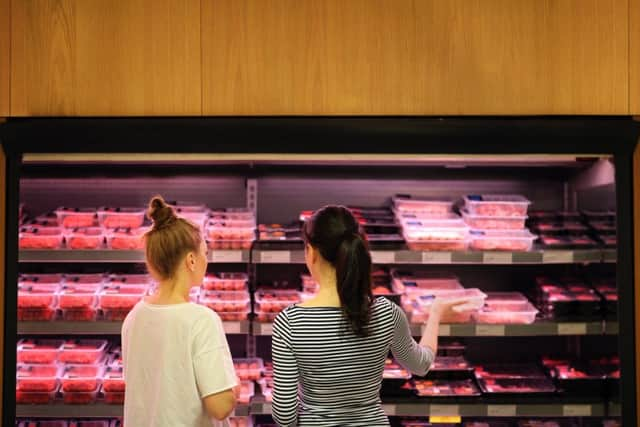Are Scottish shoppers are happy to pay more for local minced beef?
The study, from Scotland’s Rural College (SRUC), found shoppers from Scotland were also happy to fork out more for healthier and more sustainable beef mince than those in Spain.
Published in the journal Nutrients, the investigation is the first of its kind to investigate how consumers trade-off the fat content of a product against its origin, type of production and the level of greenhouse gas emissions (GHG) produced. The findings will help the producers and marketers of healthier and more sustainable food products to differentiate their products in the food market.
Advertisement
Hide AdAdvertisement
Hide AdThe study carried out in partnership with the Centre for Agro-Food Economics and Development in Spain, compared how individual labels complemented or competed against each other and looked at consumer preference, and willingness to pay, for beef mince products with different labels, including low fat, local, imported, organic and low GHG, in both countries.


The study found UK customers would pay a significantly higher premium – of €3.41 (£2.88) – for low fat, while Spanish consumers said they would only pay €1.94. Consumers in both countries valued the labels local or national above organic.
The demographic also varied between the two countries, with elderly people in the UK more willing to pay a price premium for desirable attributes such as low fat, local, organic and low GHG. Young consumers in Spain led the demand for low fat, moderate fat and local beef mince However, customers in both countries were willing to pay more for mince with a low fat content.
Lead researcher Faical Akaichi, a research economist at SRUC in Edinburgh, said: “It is often reported that consumers do not ‘walk the talk’ and that there is a gap between what they say in research studies and what they do.”
She added: “Consumers also make different trade-offs before deciding which product to buy. For example, in a survey I might truthfully say I am concerned about climate change and am willing to pay a premium for foods produced with lower carbon footprint. However, I may end up buying a food product produced with high carbon footprint because it is healthier and I value the health-related attributes more than the environment-related attributes.”